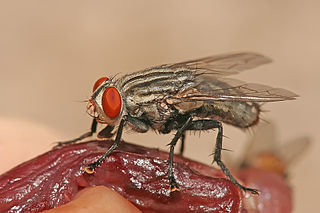Forensic Entomology

About Forensic Entomology
Forensic entomology is a field of forensic science which involves application of the study of insects and other arthropods in criminal investigation and legal cases. The principles of forensic entomology have been used to resolve crime for thousands of years but they became a part of Western science only in the 19th century.
Sub-Fields of Forensic Entomology
Forensic entomology can be divided into three sub-fields:
-
Urban forensic entomology. It typically focuses on pests infestations that are related to litigation such as legal disputes between exterminators and landlords. Besides studying insects and other arthropods, urban forensic entomology typically also involves toxicological studies, for example the appropriateness of pesticide application.
-
Stored-product forensic entomology. It investigates cases of insect infestation or contamination of commercial foods with an aim to find evidence relevant for litigation.
-
Medico-legal forensic entomology. This sub-field of forensic entomology gathers evidence through the study of insects and other arthropods at a crime scene such as murder and suicide. It most often involves the study of insect eggs and maggots, in what order their appear and where on the body they are found. Because insects occur only in particular places and are active only at a particular season, their presence can reveal a lot about location and time of the crime.
Most Frequently Studied Insects
Most frequently studied insects in forensic entomology include flies and beetles that are often found on bodies and allow forensic entomologists to determine time of death with a high degree of accuracy and certainty. Flies for instance are among the first insects to colonise a body and lay maggots which feed on the body.
According to the developmental stage of the maggots and some other factors such as weather and location of the crime scene, investigators can determine when the victim died. For example, a body that is colonised by instar (maggots in the first developmental stage) has been on the site only for a few days. Presence of maggots in later developmental stages, on the other hand, indicates that death occurred quite some time ago. Presence of beetles reveals that the person is dead for a longer period of time because they are found only on considerably decomposed corpses.
Besides flies and beetles, there may also be other insects and arthropods such as ants, wasps, moths and mites. However, some of them eat the insects feeding on the decomposing body rather than the body.
How Can the Study of Insects and Other Arthropods Help Criminal Investigation
Studying developmental stages of insects and other arthropods, along with weather elements and geographic location can help investigators determine time and location of death, and sometimes also connect the perpetrator with the crime.